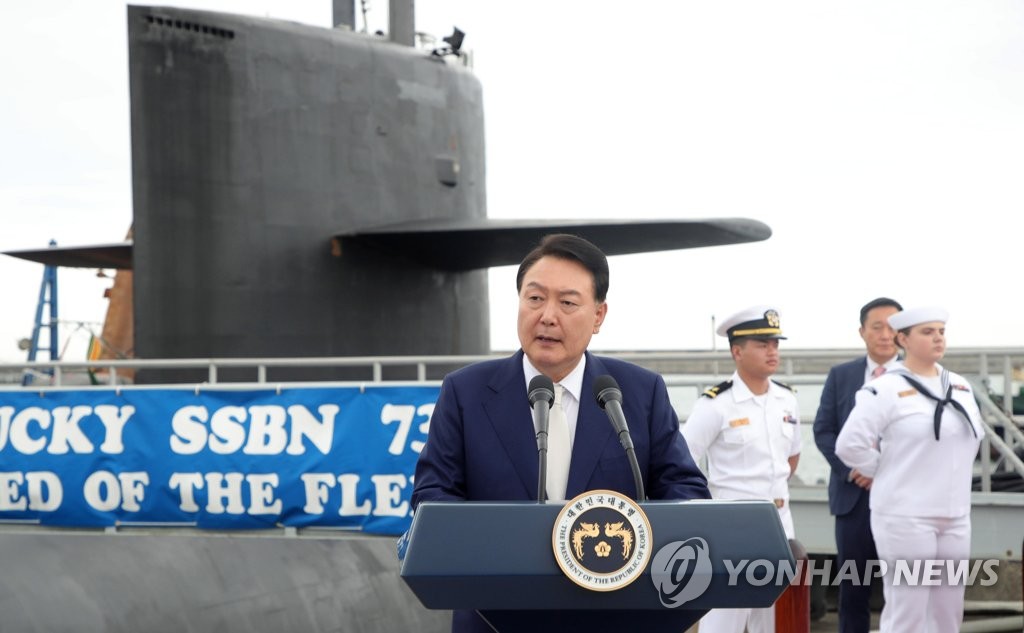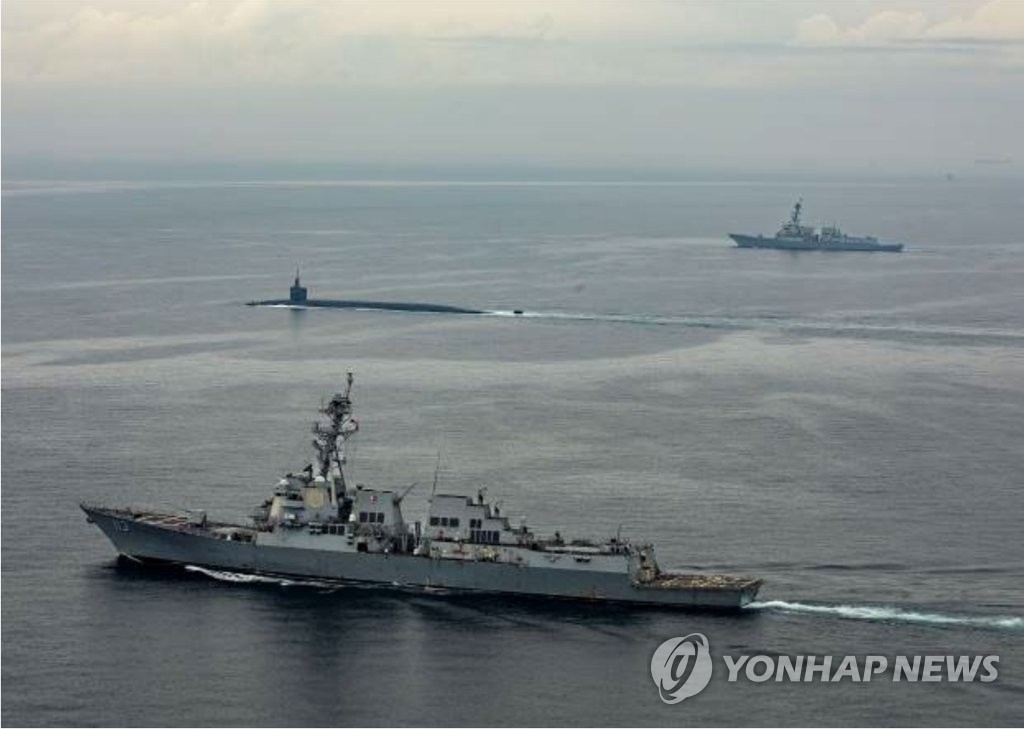- California Assembly OKs highest minimum wage in nation
- S. Korea unveils first graphic cigarette warnings
- US joins with South Korea, Japan in bid to deter North Korea
- LPGA golfer Chun In-gee finally back in action
- S. Korea won’t be top seed in final World Cup qualification round
- US men’s soccer misses 2nd straight Olympics
- US back on track in qualifying with 4-0 win over Guatemala
- High-intensity workout injuries spawn cottage industry
- CDC expands range of Zika mosquitoes into parts of Northeast
- Who knew? ‘The Walking Dead’ is helping families connect
Yoon boards U.S. nuclear-capable submarine in show of force against N. Korea
President Yoon Suk Yeol boarded the USS Kentucky, a U.S. nuclear-capable ballistic missile submarine, at a naval base in Busan on Wednesday, sending a strong warning against North Korea’s nuclear and missile threats.
The show of force came a day after the 18,750-ton Ohio-class ballistic missile submarine (SSBN) arrived in the southeastern port city in the first visit by a U.S. SSBN since 1981.
“The USS Kentucky’s deployment shows clearly the commitment of South Korea and the United States to regularly deploy U.S. strategic assets and strengthen the credibility of extended deterrence,” Yoon said during a visit with the Republic of Korea Fleet Command headquartered at the base.

“The two countries will overwhelmingly and resolutely respond to North Korea’s advancing nuclear and missile threats through the NCG and regular deployments of strategic assets, such as the SSBN,” he said.
Yoon and U.S. President Joe Biden agreed during their summit in Washington in April to establish a Nuclear Consultative Group (NCG) to discuss nuclear and strategic planning between the allies, and strengthen the credibility of the U.S. extended deterrence commitment to defending South Korea with all of its military capabilities, including nuclear weapons.
The inaugural session was held in Seoul on Tuesday as the USS Kentucky was making its port call, and Yoon said the two sides discussed the joint planning and execution of nuclear operations involving a combination of U.S. nuclear assets and South Korean non-nuclear assets, while agreeing to enhance the visibility of U.S. strategic assets around the Korean Peninsula.
“By doing so, we will make North Korea not even dream of carrying out a nuclear provocation, and we warned clearly that should North Korea carry out a provocation, it will lead to the end of that regime,” he said.
The submarine’s visit had been anticipated in line with a U.S. pledge to “further enhance the regular visibility of strategic assets” on the Korean Peninsula, including by sending a nuclear ballistic missile submarine to South Korea, in the Washington Declaration adopted by Yoon and Biden during their April summit.
Hours after the submarine’s arrival, North Korea fired two short-range ballistic missiles into the East Sea in apparent protest.
North Korea also fired a solid-fuel intercontinental ballistic missile last week in what it said was a warning to South Korea and the U.S.












